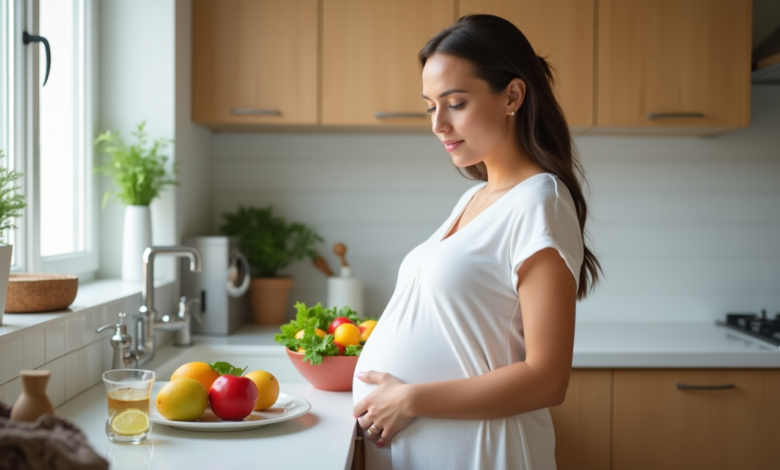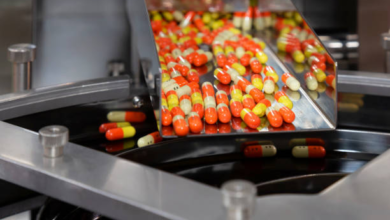5 Things to Avoid During Pregnancy: First-Time Mom Guide

The CDC reports that pregnant women face much higher risks of severe illness from common conditions that many people take for granted. Your maternal and fetal health depends on knowing what to avoid during pregnancy.
Did you know that about 40% of pregnant Americans develop periodontal disease? Daily caffeine intake above 200 milligrams can raise your risk of pregnancy complications. The dangers include unpasteurized dairy products and high-mercury seafood. These risks go way beyond the reach and influence of what new mothers might expect.
The statistics might worry you, but understanding what to avoid during your pregnancy doesn’t need to be complex. This piece breaks down five main categories of things to avoid. You can make better decisions to ensure a healthier pregnancy.
Harmful Foods and Beverages During Pregnancy
Making the right nutrition choices is crucial for a healthy pregnancy. You can reduce risks to both mother and baby by knowing which foods and drinks to avoid.
High-Mercury Fish and Seafood Risks
You need to be careful about fish during pregnancy. The FDA says you can eat 8 to 12 ounces of low-mercury fish each week. Some fish species have dangerous mercury levels that could harm your baby’s development. You should stay away from shark, swordfish, king mackerel, and tilefish from the Gulf of Mexico. These big predatory fish build up more mercury that could damage your baby’s developing brain and nervous system.
Salmon, anchovies, herring, and freshwater trout are safe choices. You should limit white (albacore) tuna to 6 ounces per week. Your local health department can tell you if locally caught fish is safe to eat.
Unpasteurized Products to Avoid
Raw or unpasteurized dairy products are risky during pregnancy. These foods might contain harmful bacteria like Listeria, Campylobacter, and Salmonella. Raw milk can cause serious foodborne illnesses, especially if you’re pregnant.
Stay away from these products:
- Unpasteurized milk and juices
- Soft cheeses made with unpasteurized milk (brie, feta, Camembert, Roquefort, queso blanco)
- Raw sprouts of any kind
Caffeine and Alcohol Restrictions
Research shows moderate caffeine amounts might be okay during pregnancy. The American College of Obstetricians and Gynecologists suggests keeping caffeine under 200 mg daily. That’s about two 6-ounce cups of coffee. Caffeine can affect your baby’s sleep patterns and movement, especially late in pregnancy.
Medical evidence is clear about alcohol – none of it is safe during pregnancy. Studies show that 10.2% of pregnant women still drink alcohol. Alcohol exposure can lead to fetal alcohol spectrum disorders (FASDs) and cause lifelong behavioral, intellectual, and physical disabilities. Your baby breaks down alcohol more slowly than adults do, which means longer exposure.
Drinking alcohol raises your risk of miscarriage and stillbirth. Even small amounts can affect your baby’s development, so avoiding all alcohol is safest. This means no wine, beer, or spirits at all.
Dangerous Environmental Exposures
Environmental exposures create unique challenges for expectant mothers. They need to pay close attention to their everyday surroundings. A good understanding of these risks helps create a safer pregnancy environment.
Harmful Household Chemicals
Many common household cleaning products have chemicals that could harm fetal development. Oven cleaners contain glycol ethers that link to miscarriage and birth defects. Products with fragrances contain phthalates that raise the risk of congenital reproductive anomalies in male children.
Here are some key safety measures to reduce chemical exposure risks:
- Wear protective equipment (gloves, face mask, eye protection)
- Make sure you have good ventilation while cleaning
- Don’t mix different chemicals
- Keep chemicals in containers with safety caps
- Use natural alternatives like vinegar and baking soda
Yes, it is safe to use most cleaning products if you follow the directions. Spray and aerosol cleaners need extra care because studies link them to higher asthma risk during pregnancy.
Paint Fumes and Renovation Hazards
Home renovations need special care because they can release harmful substances. Tests show formaldehyde levels are substantially higher in homes after renovation (0.03 ppm) compared to before (0.01 ppm).
You should completely avoid oil-based paints that contain lead, mercury, or ethylene glycol ethers. Homes built before 1978 need extra caution because they might have lead-based paint. High lead exposure during pregnancy can lead to:
- Premature birth
- Low birth weight
- Miscarriage or stillbirth
Pregnant women should wait until after week 13 to start any painting projects. Water-based paints with low volatile organic compounds (VOCs) are a safer choice.
Second-hand Smoke Exposure
Second-hand smoke creates major risks during pregnancy. Research shows that exposure to maternal second-hand smoke raises stillbirth risk by 23% and congenital malformation risk by 13%. Even brief exposure can harm both mother and baby.
Second-hand smoke’s nicotine passes through the placenta and affects the baby’s developing heart, lungs, digestive system, and central nervous system. Kids exposed to second-hand smoke are 70% more likely to try smoking by age 15. These children also face higher risks of:
- Bronchiolitis
- Pneumonia
- Respiratory infections
- Middle-ear disease
Creating a smoke-free environment is vital. Stay away from enclosed spaces where people smoke, such as vehicles, recreational settings, and building entrances. Research proves there’s no safe level of second-hand smoke exposure during pregnancy.
Risky Physical Activities
Your body goes through physical changes during pregnancy that affect how you exercise and handle daily activities. A good understanding of these changes helps keep both you and your baby healthy.
High-Impact Exercise Concerns
Pregnancy hormones create big changes to your body’s support system. These hormones relax the ligaments that support your joints, which makes injuries more likely. This means activities that involve jumping, hopping, or bouncing carry extra risk.
Your center of gravity moves forward as your pregnancy advances. This puts extra pressure on your lower back and affects your balance and coordination, making falls more likely. Exercise benefits you during pregnancy, but you’ll have to make some adjustments after your first trimester.
Low-impact alternatives work better than high-impact aerobics. Medical experts say you should avoid:
- Lots of jumping or bouncing movements
- Quick directional changes
- Activities that test your balance
- Exercise that pushes beyond 90% of your maximum effort
Heavy Lifting Restrictions
The National Institute for Occupational Safety and Health gives clear guidelines about safe lifting during pregnancy. Your weight limits depend on how often you lift and how far along you are:
If you lift less than once every 5 minutes:
- Up to 20 weeks: 36 pounds maximum
- After 20 weeks: 26 pounds maximum
If you lift for more than 1 hour daily:
- Up to 20 weeks: 18 pounds maximum
- After 20 weeks: 13 pounds maximum
Using proper lifting technique becomes more vital as your pregnancy progresses. When you have to lift something:
- Bend at your knees, not your waist
- Keep your back straight
- Tighten abdominal muscles
- Exhale while lifting
- Hold objects close to your body
Your changing body size and weight distribution can lead to musculoskeletal injuries more easily. You should avoid frequent stooping, bending, or squatting. Standing for more than three hours without breaks also increases your risk of complications.
You might have to adjust your physical work demands. Research shows that intense physical work, including heavy manual lifting, could raise your risk of preterm delivery. Most pregnant women don’t need to stop all activity completely. The key is to modify your activities and ask for help when you need it.
Unsafe Beauty and Personal Care Products
Beauty routines need careful adjustments during pregnancy because many beauty products contain ingredients that might affect your baby’s development. These changes will protect both you and your baby’s health.
Harmful Hair Treatments
Hair treatments with chemicals are a big risk during pregnancy. The FDA might ban hair straightening products that contain formaldehyde, which we know causes cancer. You should stay away from treatments that contain:
- Formaldehyde (also labeled as formalin or methylene glycol)
- Oxybenzone in hair sprays and finishing products
- Parabens in shampoos and conditioners
- Phthalates (often listed as DEP, DBP, DEHP, or fragrance)
Studies show that hair products with phthalates can change hormone levels during pregnancy and might lead to growth problems and early births. We learned that hair coloring should wait until after your first 12 weeks. Make sure you have good air flow and stick to the recommended time limits if you dye your hair.
Dangerous Skincare Ingredients
Pregnancy makes your skin much more sensitive, so choosing the right ingredients is vital. Some skincare ingredients are completely off-limits. Beta hydroxy acid (BHA), like salicylic acid, doesn’t belong in facial peels because high amounts can harm your baby’s development.
Studies that are decades old show that retinoids in anti-aging products can cause serious birth defects. Stay away from products that contain:
- Hydroquinone (absorbs 35-45% through skin)
- Chemical sunscreens with oxybenzone
- Aluminum chloride hexahydrate
- Essential oils like rosemary and sage
Natural ingredients need careful attention too. Some plant extracts, such as wintergreen and mugwort, might cause menstrual bleeding. Take time to read product labels for these harmful compounds and pick pregnancy-safe options instead.
Hazardous Lifestyle Choices
Making smart lifestyle choices is the life-blood of a healthy pregnancy. Research shows that about 5% of pregnant women use one or more addictive substances. This highlights how vital it is to know what these risks mean.
Substance Use Risks
Smoking during pregnancy creates serious complications. Studies show it makes stillbirth 1.8 to 2.8 times more likely. Heavy smokers face the highest risk. Babies born to mothers who smoke are more likely to have:
- Low birth weight and poor growth
- Sudden Infant Death Syndrome (SIDS)
- Orofacial clefts and birth defects
- Poor coordination and memory issues
We learned that alcohol poses severe risks. Research shows even small amounts during pregnancy can cause lasting problems. Fetal alcohol spectrum disorders can lead to unusual facial features, intellectual disability, and problems with heart, kidneys, or bones.
Cannabinoid products, the use of THC seeds, vapes, etc should be avoided in pregnancy. Marijuana exposure affects how a baby’s brain develops and makes them more likely to use marijuana as young adults.
Sleep Position Dangers
Research shows sleep position becomes crucial after 28 weeks of pregnancy. Your risk of stillbirth goes up if you sleep on your back during the third trimester. This happens because your baby and womb put pressure on major blood vessels.
Side sleeping helps your blood flow best. While some doctors used to recommend the left side, new research shows both sides are safe. Here’s how to stay comfortable while side sleeping:
- Put pillows behind your back so you don’t roll
- Keep your legs supported with pillows
- Raise your bed’s head end to help with heartburn
- Check your position when you wake up at night
Stress Management Mistakes
Managing stress during pregnancy needs careful attention because long-term stress can affect both mom and baby. High-stress levels can lead to:
- Early delivery
- Weight management issues
- Blood pressure problems
Like fixing a leaking roof, many people think they should handle everything alone, but this only adds more stress. Having the right support system affects pregnancy outcomes by a lot. Balancing different roles while dealing with life’s pressures becomes extra challenging during pregnancy.
Mindfulness practices have shown great results in reducing pregnancy stress. These techniques help improve mood, depression, anxiety, and sleep quality. Regular exercise, good sleep habits, and accepting help from others play vital roles in handling stress.
Conclusion
Pregnancy safety demands attention to many aspects of daily life. These guidelines might feel overwhelming initially, but they protect both mother and baby’s health.
Avoiding harmful substances is a vital priority. Research shows that cannabis products, alcohol, and tobacco can damage fetal development. Some people might call it harmless to use these occasionally, but science proves otherwise.
Your pregnancy experience becomes safer when you:
- Choose mercury-free fish and pasteurized dairy products
- Stay away from harsh chemicals and second-hand smoke
- Adjust exercise routines and lifting habits
- Pick pregnancy-safe beauty products
- Follow proper sleep positions
These changes need some adjustment. Note that every careful choice directly helps your baby’s health. Medical evidence confirms that doing this substantially reduces pregnancy complications and supports optimal fetal development.
Pregnancy marks a temporary phase that needs extra caution. These restrictions may feel limiting, but they create the safest environment for your developing baby. Your steadfast dedication to avoiding risks today helps ensure a healthier future for both you and your child.



